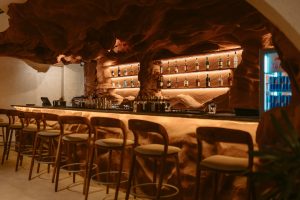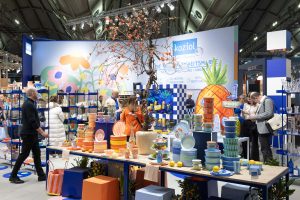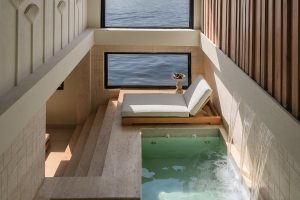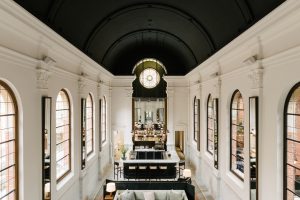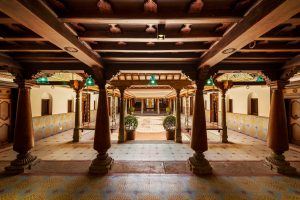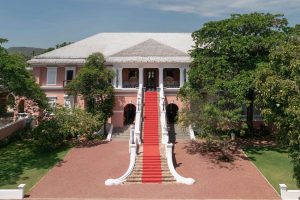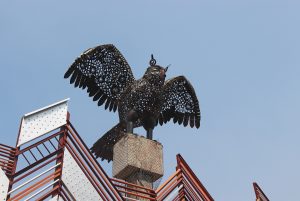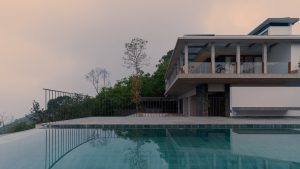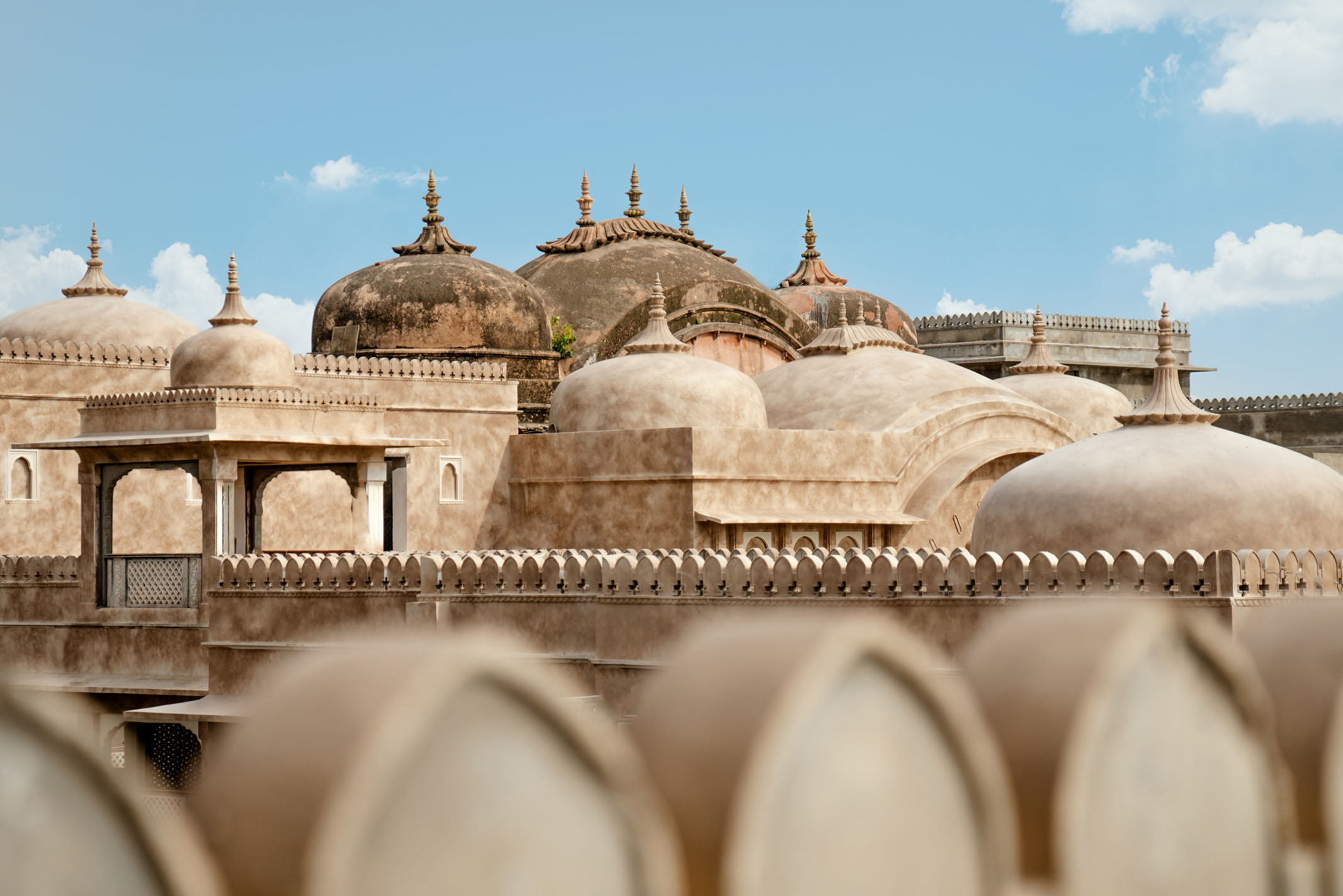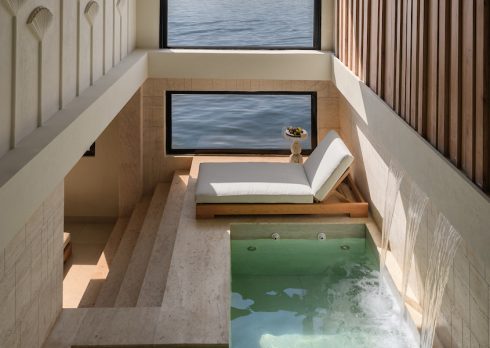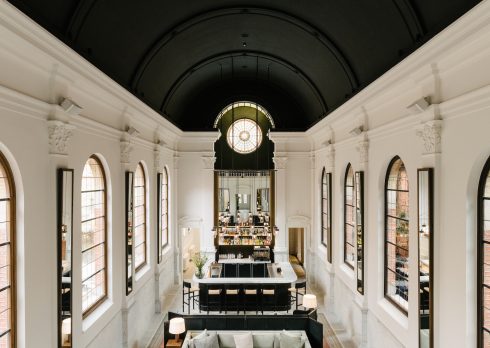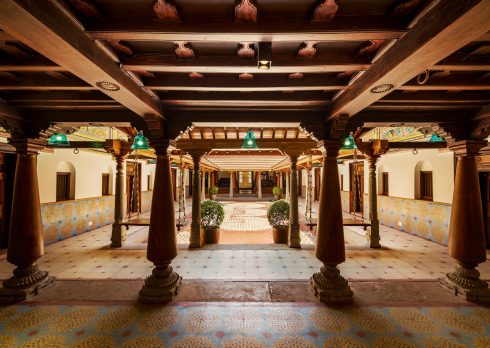The Heritage Hotel Checklist – Rajasthan Edition
In the past decade, Rajasthan’s status as the veritable destination for heritage tourism in India has been firmly cemented. There’s no denying that heritage hospitality is in its Golden Age; for the cultured traveler, merely indulgence won’t cut it anymore – they want a story, an experience that sometimes extends beyond just the hotel itself. The result? A proliferation of restored ancient palaces, forts, and havelis that serve as compelling historical vignettes to travelers looking for authenticity. Rajasthan’s rich cultural landscape, then, makes a favourite amongst both hoteliers looking to get in on this shift towards experiential travel and the tourists driving this very change. Here are some of our top picks from the regal desert state’s more recent offerings –
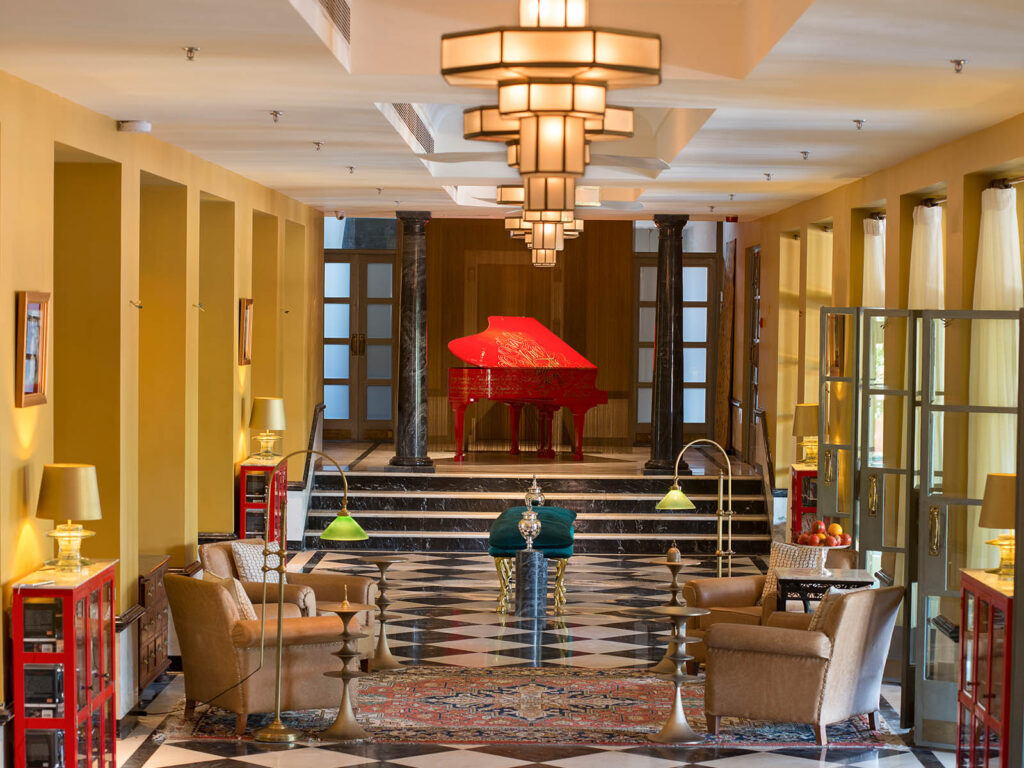
Narendra Bhawan, Bikaner
Narendra Bhawan, a boutique luxury property by the Rajasthan-based MRS Group is unlike the other palace hotels spread across Rajasthan. Set in the heart of the city, it is modest in size but monumental in appeal. The hotel stands as a tangible reflection of the life of Narendra Singhji, the last reigning Maharaja of Bikaner. His penchant for travel, love for literature, and progressive, socialist views that fully embraced the idea of a democratic India form the very ethos of Narendra Bhawan. Built as his residence in 1969, the structure serves as a striking design hotel that bears witness to a one-of-a-kind legacy. The structure was restored by architect and founder of AKFD Studio, Ayush Kasliwal who took inspiration for the overarching style, material palette, and colour scheme from the historic Junagarh Fort in Bikaner. The interiors, however, draw from the pulse of Bombay during the burgeoning Art Deco Movement, the regimental order that mirrored the erstwhile ruler’s family history, and the glamour of Broadway. Rich velveteen fabrics, glittering mirrors, and pearl string curtains lie behind this red sandstone facade.
DP Loves –
-The Literary Lunch experience, featuring seven mouth-watering courses, each of which reference classic novels that ranged from Ulysses by James Joyce to Sylvia Plath’s Bell Jar
-The Diwali Chowk, an exquisite central courtyard at the heart of the hotel
-Al fresco dining at The Gaushala, an animal-friendly outdoor lounge that overlooks the grand facade of the hotel
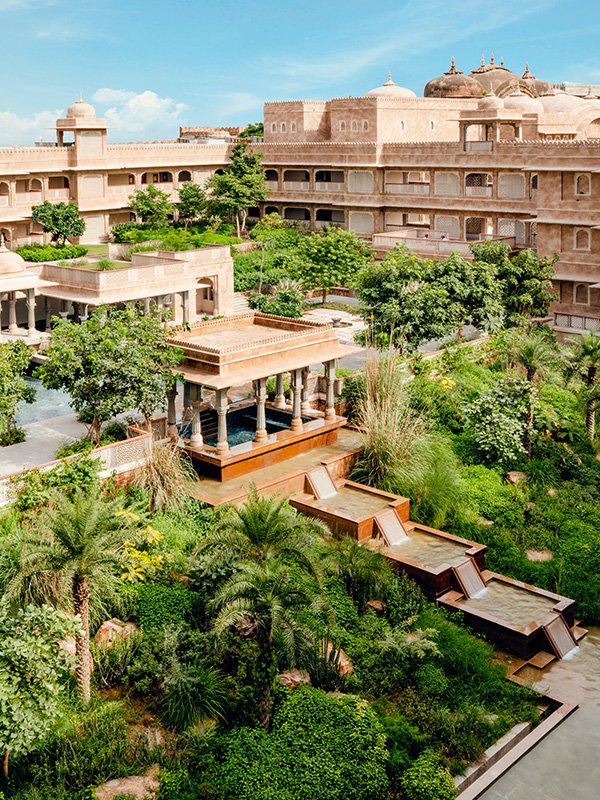
Six Senses Fort Barwara, Sawai Madhopur
Six Senses’ first-ever luxury resort in India, Six Senses Fort Barwara has fast become one of the most sought-after properties in India. A historic 14th-century fort has been sensitively converted into a sanctuary of well-being comprising 48 suites, 3 restaurants, and a sprawling 30,000 sq ft spa amongst other amenities. Six Senses’ aim with their Fort Barwara property was to offer a reinterpreted experience of royal, ancient India. Every suite at the resort has been designed in a contemporary Rajasthani style to tie into the overarching historic backdrop of the fort, complete with private rooftop terraces and state-of-the-art in-room technology. The history of the fort dates back 700 years; Prithviraj Singh from the noble family of Barwara has restored the fort to its previous glory in tandem with Panika, under the leadership of late Nimish Patel and Parul Zaveri for architectural design, with a team of conservation experts including landscape designer Savita Punde and horticulturist Pradeep Kishen.
DP Loves –
-The well-curated junior spa menu
-The Alchemy Bar workshop, where guests can learn how to make bespoke potions and cures using organic herbs, essential oils, and other natural ingredients
-The detailed sleep program. Guests have the option to fill out an online questionnaire that enables an assigned Sleep Ambassador to fine-tune the room before arrival
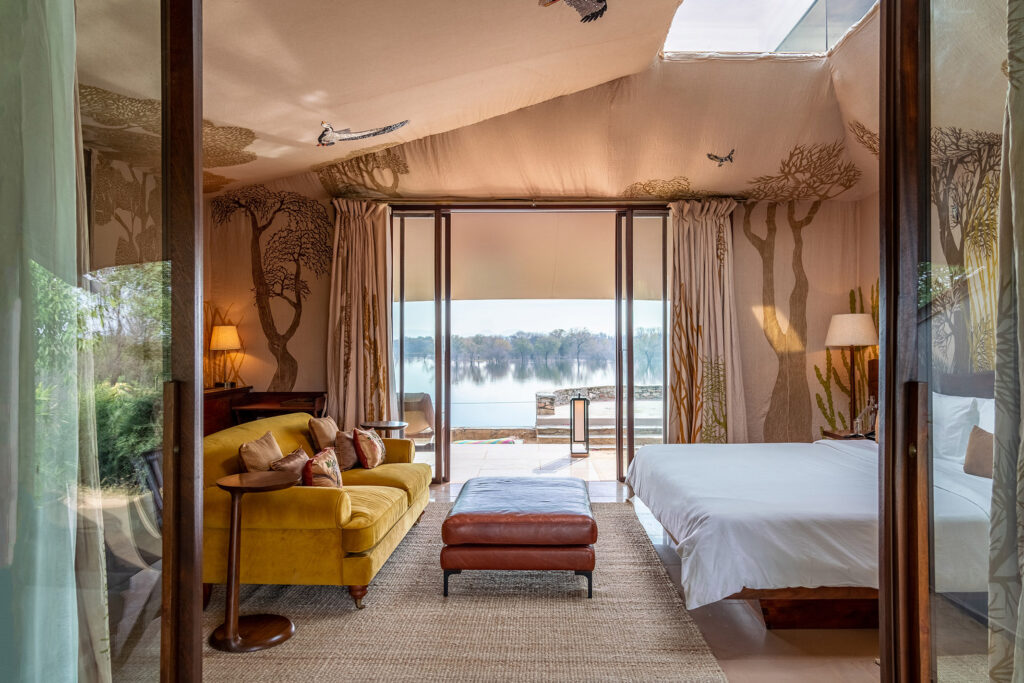
RAAS Chhatrasagar, Nimaj
RAAS Chhatrasagar is a boutique tented hotel in Nimaj that reinterprets the historical and weaves into its design the spectacular biodiversity of Rajasthan. The sixteen-room retreat sits on a check dam nearly a hundred and fifty years old and overlooks Chhatrasagar – an artificial lake created in the late nineteenth century by a local Rajput noble. Its premise is a simple one; to stand out from the crowd by blending in with the environment. The hotel currently stands as one of the newer Indian properties that align with the tenets of luxury eco-tourism, which is on a slow but steady incline in the country. From an extensive reforestation program to energy-saving systems, RAAS takes on a holistic view of sustainability. Designed by Studio Lotus, the layout of the hotel is linear and comprises a pod-like arrangement of conjoined suites raised on stilts. Given its remarkable location, the design consciously accounts for outdoor experiences on either end of the pods; sunrises over the lake and sunsets into the forest serve as a part of the guest experience and each pod hosts spill-outs for outdoor lounging.
DP Loves –
-The retractable skylight installed into the ceiling structure of every room
-The Chhatrasagar Lake boating experience
-The 250 species of birds that are found in the area
-The rich textiles that complement the overall tent experience, featuring woodblock, screen, and digital prints, as well as intricate hand-embroideries in the shape of indigenous plant and animal life
-The in-house organic farming patch
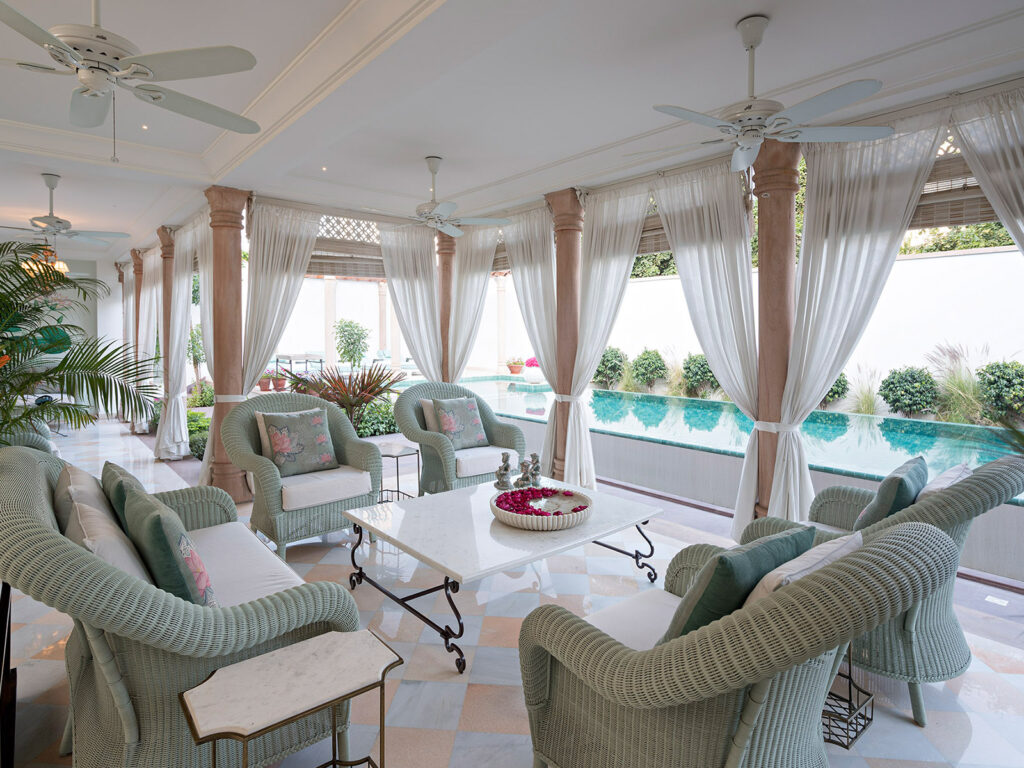
The Rohet House, Jodhpur
The Rohet House, a luxury residence of six suites and two rooms, is located in the tony residential neighborhood of Ratanada, once home to aristocratic residences in the pre-independence era. The luxury boutique stay has a rich and intriguing history that dates back to 1969; it was built as a city residence by the late Thakur Manvendra Singh and late Thakurani Jayendra Kumari of Rohet who come from a family with aristocratic lineage. Over the years, as a natural extension of their warmth and hospitality, the family, like some of the noble families in Rajasthan, opened up their homes to guests, eventually creating a portfolio of luxury stays for guests to enjoy. Since it opened its doors in 2019, The Rohet House has been a draw to the culturally curious and those appreciative of the convergence of heritage, luxury, and design.
DP Loves –
-The timeless luxuries that inform the culinary experiences. Chain Singh, one of the servers at the restaurant, is trained to fold napkins in 42 different ways
-The stable visit to The Rohet House’s sister property, Mihir Garh
-The larger-than-life frescoes on the walls that were hand-painted by local artists
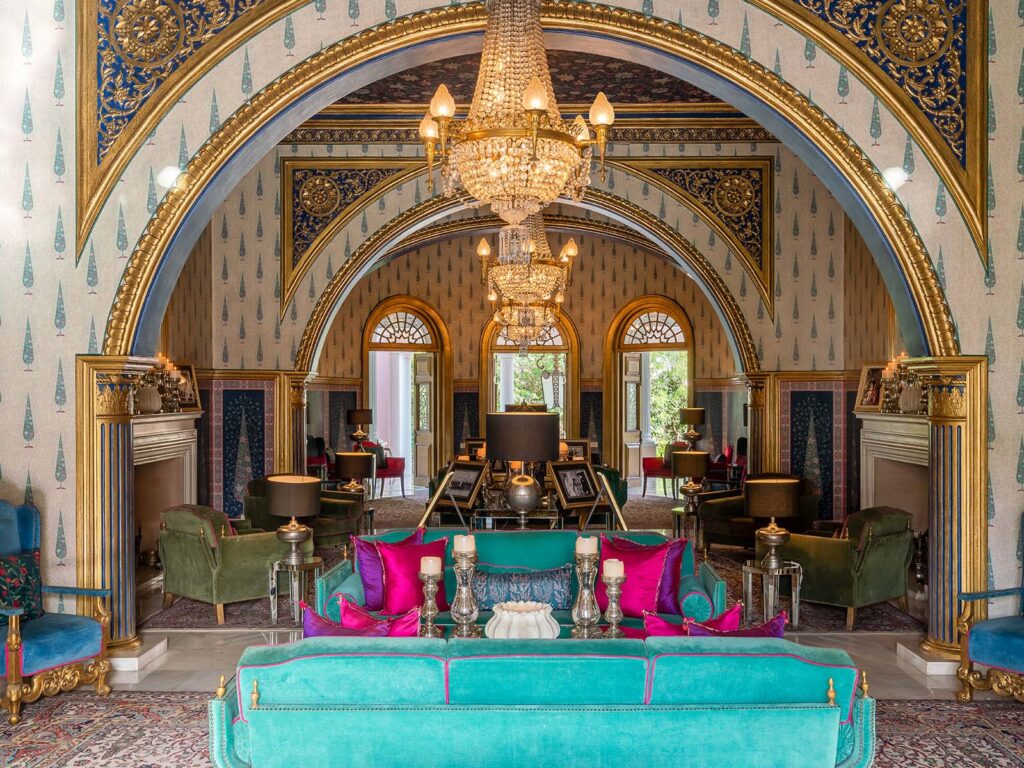
Rajmahal Palace RAAS Jaipur
Built as a suburban getaway in the early 1700s by Maharaja Sawai Jai Singh II, this luxury hotel is the latest under the RAAS brand, a Rajasthan-based boutique hospitality group. Rajmahal Palace still features the original bones of a Rajput construction, but is layered with Art Deco and other architectural forms that were added over the years by British residents and the Jaipur royal family who own the property. Interior designer Adil Ahmad was commissioned to restore the palace as it was converted into a heritage hotel. Eschewing demure colour palettes and traditional motifs, Rajmahal Palace is splashed in eclectic hues like hot pink and emerald green that are tastefully offset with period furniture and family heirlooms. Every room at the property is furnished with a tasteful mix of traditional and contemporary artefacts, and some of them are even named after the celebrity visitors who once occupied them like Queen Elizabeth II, Lady Diana, and Mountbatten. Palace grounds that span 1,00,000 sqft make Rajmahal a compelling choice for destination weddings.
DP Loves –
-The 48 different kinds of printed wallpaper, specially commissioned for the hotel, that cover the walls of every room, suite and public space
-The striking Art Deco pool
-The intricately detailed Polo Bar that illustrates Jaipur’s polo history


